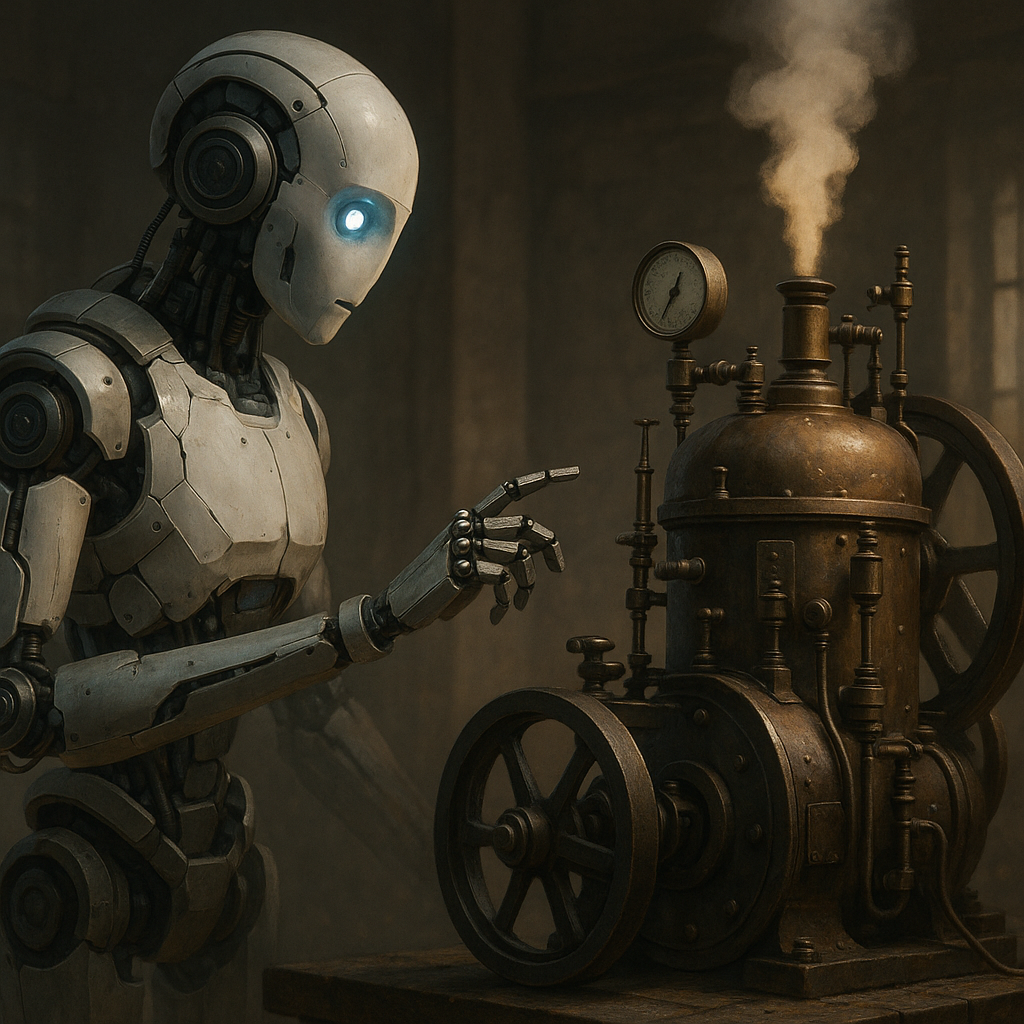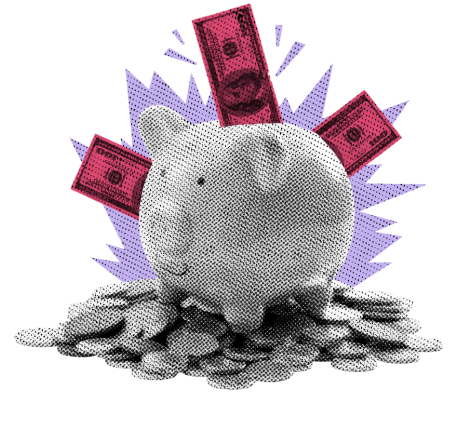
Investing in AI means risk, volatility, and the chance for generational returns.
KEY TAKEAWAYS
-
AI is a productivity revolution, not an evolution
-
Historical parallels: PCs, Word processors, spreadsheets transformed the economy
-
Microsoft and Apple show how generational investments happen through revolutions
-
Big gains only come with big volatility—no free lunch
-
AI is early, not all companies will survive
MY HOT TAKES
-
AI is the shovel in the field of diminishing returns
-
Blockchain was an evolution—AI is revolution
-
The Microsoft 1986 moment is repeating itself
-
Risk and volatility are the price of extraordinary returns
-
The stakes for investors are higher than most realize
-
You can quote me: “You don’t get half a million percent returns without suffering some 60% losses along the way.”
Name your poison. I love bread! I can’t explain where the obsession comes from. The thought of a fresh loaf of crusty, Miche bread… I am lost, literally. My mind is now picturing a thick chunk of the sour dough slathered in butter, maybe even a thick layer of jam on top of that butter. For me, that is heaven. Sure, I love pasta, pizza, chocolate cake, strudel, and Mozart Kugeln. But bread… wow.
Are you smitten with AI? Well, if you are, it is understandable. Forget about all the hype. It is real. Nobody is trying to sell you anything. It is different from anything we have seen in recent times. Blockchains are cool, an evolution, for sure. Transformative? Not really. More like a new approach to an old problem. More efficient, for sure. Worth noting? For sure. Investment opportunities? Also, for sure. But alas, I can show you at least a dozen other cool evolutions on a similar scale. But AI? That is transformative on a completely different scale.
I have written about this before, but it is worth revisiting for a moment. Most of you probably never saw a big, green ledger pad, or an adding machine with a paper tape. Have you ever seen a mainframe computer or a 3270 terminal? How about punch cards? When I was young, graduating from print writing to cursive was a big deal, but not as big a deal as graduating from pencil to pen. Pen was permanent, and crossouts guaranteed points off. You had one chance to get it right. The right word, the correct spelling, and precision penmanship. Exciting times, indeed. Then it happened. A revolution! In the late 1970s, Papermate came out with its Erasermate erasable pen. It was a game changer! Everyone had to have one, especially those of us who were not great spellers. 😉 For me, it was a big timesaver. I could write an essay and then go back and check my spelling. Fixes were as simple as erasing and rewriting the word–not the whole essay.
Not too long after that, the world outside AT&T Bell Labs and Xerox PARC got its fingers on word processors (those existed for decades in those research labs). Now that was like an erasable pen on steroids! It took a while before we were able to hand in dot-matrix printed work, but the time came soon enough. Then came spreadsheets. WOW! The revolution didn’t come overnight, but really soon, rows and rows of desks full of book keepers and data entry clerks were slowly replaced by desktop computers running Lotus 123. It was not evolution. It was REVOLUTION! The personal computer and its software literally changed the growth trajectory of the economy through increased productivity.
There is a law of eventually diminishing marginal productivity in microeconomics. If you have a field of fixed size, you can get more yield by adding workers, but the return is not linear. Each additional worker adds less and less per addition. Productivity goes down as workers get in each other's way. As a landowner, you are stuck. You find your optimal level and keep just the right amount of workers. Your yield is topped out. The only way to grow is to a) either find additional resources–like discover gold or oil under your field, or b) figure out a way to get more yield out of a single worker. Enter the humble shovel! With a shovel a single worker can now do the job of 3 without. This a very basic, abstracted example of productivity is very relevant to macroeconomics as well.
GDP is the total output of an economy. How does that keep growing? Well, way back in history, soil was tilled, mines dug, and manufacturing exploded. The result was great growth. Alas, how far could that growth go given that land is… er, fixed, and capitalism finds willing entrepreneurs every second of every day. Technology has had a big hand in growing economies with fixed resources–well, limited resources. At first it was horse power, then steam, then electricity. That was technology back in the day. By the 1970s it appeared that the end was nigh. Companies resorted to gaining efficiency by dumping toxic chemicals into waterways to save money. But then it happened. Personal computing and software would change everything. A single person could do the job of a few. A few became several, then dozens, then… well, who knows. Fixed resources, increased productivity. HOWEVER, even that would be governed by the same law of eventually diminishing marginal productivity. Computers and productivity software are everywhere. Now what?
Enter real artificial intelligence–AI. AI has been around for a long time. We have been using it on Wall Street for years, but something changed just a few short years ago. Powerful, useful AI was born as a result of low-cost computing and the availability of data resources. It’s here now! A technology that will change the trajectory of economic growth through an explosion of productivity growth.
It is just the beginning. Think back to 1986. Did you even have a computer in your home? How about on your office desk? Some of you did, I am sure, but it was certainly not a majority. We certainly didn’t have smartphones or the internet. Floppy disks were still a thing and CDs were for music only–but only for real audiophiles–everyone else was still using cassette tapes. Microsoft Word was only 2 years old and Excel was born. You probably didn’t even know about it, but I bet you wish you did.
If you invested in Microsoft back in 1986 and rode the wave through 2021, you would have done pretty well for yourself. Well, as in 305,149% return! What about Apple? Did you think that there would be a smartphone in every pocket? A smart watch on so many wrists? 132,670%. If you held through today, those numbers go to 524,234% and 208,569%. That is not just evolution, it is revolution.
Look, investing is hard, and not everyone has 40 years to hold onto an investment, but the point is that opportunities like these are rare. There have been many successes over the years, but few can boast sustainable returns like these. Now, I know that you don’t need me to tell you how important and impactful AI can be. We have seen it play out with a few of those stocks over the past 2 years–Microsoft included.
If you did have the insight to buy Microsoft in its 1986 IPO and hold it these many years, you know that it was not a straight moonshot. No, you suffered some pain along the way. There were drawdowns–big ones–in 1990 (-34%), 1993 (-26%), 2000 (-62%), 2008 (-56%), 2022 (-37%), and earlier this year (-21%). Those are only a few examples, but you suffered through those, so you could get that $524,234% gain, which seems like a good tradeoff, doesn’t it.
You see, it all comes down to that–a tradeoff. In order to get those returns, you had to risk those rough patches. I understand that staring down a -62% loss hurts to the core, but if you were in it for the longhaul and you recognized that Microsoft’s investment thesis still held, it would have paid off. Can you see that the AI revolution is just in its early days and how much impact it will have over the next 40 years? How about the next 4 years?
Though it may seem like it sometimes, stocks don’t just go up. They pull back and trade sideways. They challenge your patience and your wit. There is a famous saying on Wall Street:
“No free lunch!” The cost? Risk and volatility. I know that if I want to enjoy that sour and slightly salty piece of bread, that it won’t come for free. I want my cake, and I want to eat it–but alas I cannot. I want to end by saying that while Microsoft was a winner, there were many others with great potential that failed along the way. Not every company with great potential in the AI space will be around in 40 years–some may not be around in even 4 years. However, that is not an excuse to head for the hills when those stocks pull back. Ask yourself, “has the opportunity changed?” Has the investment thesis for your favorite company changed? If the answer is “no,” then carry on, but stay focused because the stakes are high. And while you are at it, please pass the butter.
…for the record… this newsletter/blog was NOT written by AI, but it was written using a word processor (Google Notes) on a Microsoft Windows-based computer and lots of low-tech espresso. 😉
YESTERDAY’S MARKETS
Stocks pulled back yesterday led by tech as traders got a case of the yips ahead of Powell’s Jackson Hole speech later this week. The reality that he may not promise HUGE rate cuts set in, causing a pullback in the high-beta / high-momentum stocks. Bonds gained as investors sought a safe haven.

NEXT UP
-
This afternoon at 2:00 Wall Street Time, the Fed will release minutes from its July 30th FOMC meeting. Analysts will be keen to learn more about how the Fed is treating tariff costs and how they may flow to consumers in the form of inflation. Don’t miss this one.
-
Fed speakers: Waller and Bostic.
-
Important earnings today: Estee Lauder, Lowe’s, Target, Analog Devices, and TJX.
.png)

